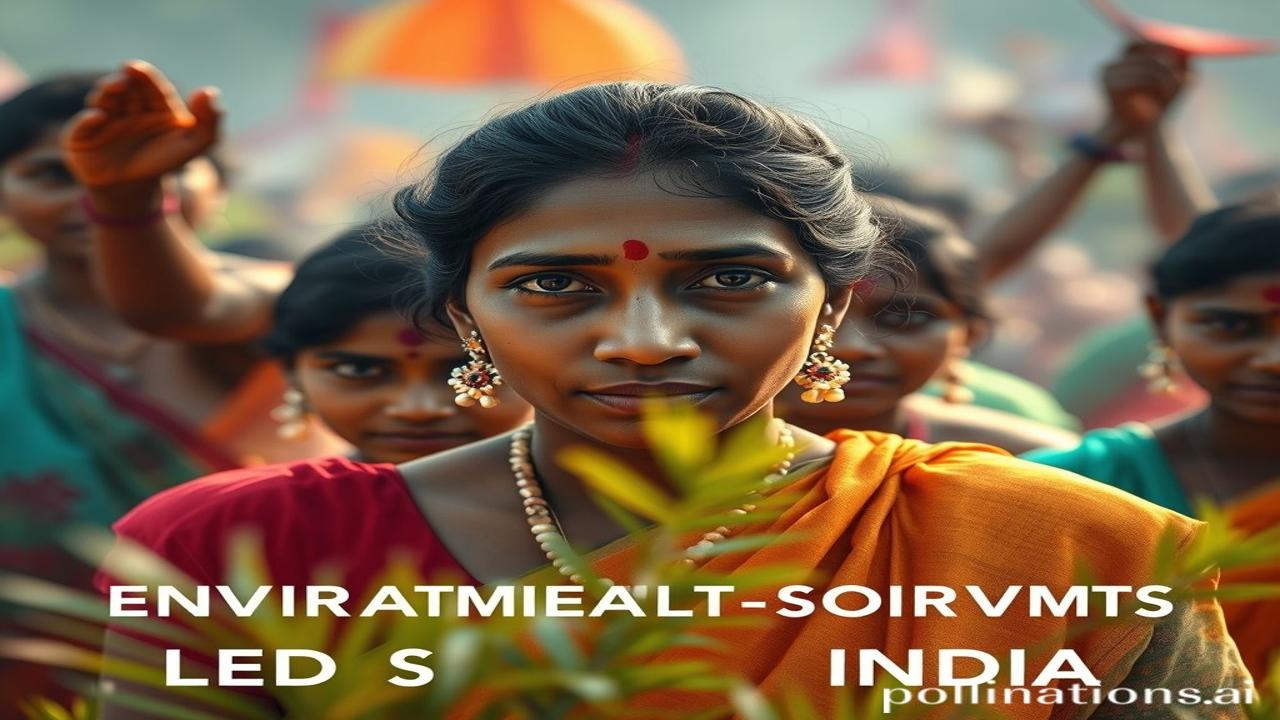Dharti Maa Ki Pukar: Environmental Movements Led by Women in India
Kabhi suna hai jungle mein ek aisi awaaz jo pedon ki sarsarahat se bhi zyada teekhi thi? Ek awaaz jo pattharon ki sakhti aur nadiyon ki behti hui dhar se bhi zyada mazboot thi? Yeh awaaz thi un Bharatiya mahilaon ki jinhone apni dharti maa ko bachane ke liye ladai shuru ki. Waqt ki dhool mein dabi yeh kahani, aaj phir se zinda hone ko betaab hai.
Bharat Mein Paryavaran Andolan: Ek Historical Nazar
What exactly are we talking about? Well, we’re diving into the incredible stories of environmental movements in India, spearheaded by some truly remarkable women. These movements, spanning decades and regions, tackled deforestation, pollution, and the unjust exploitation of natural resources.
When and where did these movements take place? From the famous Chipko movement in the Himalayas of the 1970s to the ongoing battles against industrial pollution near coastal areas, these movements sprung up across the country wherever nature was threatened.
Why are they important? Because they show us the power of grassroots activism, the deep connection between women and nature in Indian culture, and the urgent need to protect our environment for future generations. Yeh sirf paryavaran ke bare mein nahi hai; yeh Bharatiya sanskriti aur jeevan shaili ke bare mein hai.
Chipko Andolan: Jab Mahilaon Ne Pedon Ko Gale Lagaya
One of the most iconic examples is the Chipko movement. In the early 1970s, villagers, mostly women, in the Garhwal region of the Himalayas, literally hugged trees to prevent them from being felled by logging companies. Gaon ki mahilaon ne pedon ko apni jaan se zyada pyara mana.
The movement was led by figures like Gaura Devi, a simple village woman who single-handedly confronted contractors and their axemen, shaming them into backing down. Picture this: a group of women, clad in their colorful saris, standing defiantly in front of massive trees, their voices echoing through the mountains, “Agar ped kaatoge, toh humein bhi kaatna hoga!”
Narmada Bachao Andolan: Medha Patkar Aur Ek Jheel Ki Raksha
Another powerful example is the Narmada Bachao Andolan (NBA), led by Medha Patkar. This movement fought against the construction of large dams on the Narmada River, which displaced thousands of people and submerged vast tracts of forest land.
Medha Patkar ne, apni atoot nishtha se, ek desh ko dikhaya ki vikas ka matlab vinash nahi hona chahiye. She mobilized communities, organized protests, and challenged the government’s development policies, becoming a symbol of resistance and social justice.
Dharti Maa Se Gehra Rishta: Mahilaon Ka Yogdaan
Why were women at the forefront of these movements? Well, in many rural communities, women are the primary users of natural resources. They collect firewood, fetch water, and cultivate the land. They are directly affected by environmental degradation, and they understand the importance of protecting these resources for their families and communities.
Moreover, in many Indian cultures, women are seen as custodians of nature, embodying the nurturing and life-giving qualities of the earth. Dharti maa se unka rishta, sirf ek vyavharik rishta nahi hai, balki ek pavitra rishta hai.
Aaj Ki Duniya Mein: Paryavaran Chetna Ki Jyoti
Even today, the legacy of these women-led movements continues to inspire environmental activism in India. We see their influence in the countless grassroots organizations working to protect forests, rivers, and coastlines. We see it in the growing awareness of sustainable living and the importance of respecting nature.
Bharatiya hone ka matlab hai apne paryavaran ko pyar karna aur uska samman karna. These movements remind us that we are all connected to the earth, and we all have a responsibility to protect it.
Myth Buster: Environmentalism is not just a “Western” concept.
Log aksar sochte hain ki paryavaran ki chinta ek “Western” idea hai. Lekin asli sach yeh hai ki Bharat mein, prakriti ki puja aur sanrakshan ki parampara hazaaron saalon se chali aa rahi hai. These women were not inspired by Western theories; they were driven by their deep-rooted understanding of Indian culture and their love for their land.
Aankhon Dekhi: Jangalon Ki Khushboo, Nadiyon Ki Awaaz
Imagine walking through a dense forest, the air thick with the scent of damp earth and wildflowers. Feel the cool touch of the temple walls as you seek blessings for the health of your village. Hear the roar of a mighty river as it carves its way through the mountains. These are the sounds, smells, and sensations that connect us to nature, and that inspired these women to fight for its protection.
Antim Vichar: Prakriti Ka Aashirwad
“Vasudhaiva Kutumbakam” – The world is one family. This ancient Sanskrit phrase reminds us that we are all interconnected, and that our actions have consequences for the entire planet. Let us learn from the courage and dedication of these women and work together to create a sustainable future for all.
